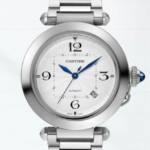Diffractive beam shapers are filter-like optical components that can transform the shape of an input beam into a predefined irradiance distribution. This transformation is carried out by the diffractive beam shaper by employing the wave properties of light which then give rise to diffraction effects, as the name implies.
A diffractive beam shaper comprises an array of discrete modulating elements, which can be referred to simply as pixels. Each pixel imparts a phase step that may differ from the surrounding pixels. A beam traversing a diffractive beam shaper is then modulated in a piecewise fashion and, as a result of local wave interference, a new beam shape emerges. Such behaviour cannot be explained with ray or geometrical optics and hence the design of these elements relies on diffractive wave theory.
To design a diffractive beam shaper, one starts with the desired output beam shape. Then, using an optimization algorithm based on diffraction theory, such desired shape is simulated to back propagate to the plane of the diffractive beam shaper. Finally, the constraints related to the manufacturing of a pixelated element are taken into account before obtaining the final diffractive optical element.
The type of beam shaping transformation that can be accomplished with a diffractive beam shaper can be of any sort. The most sought-after type of transformation is to convert the typical Gaussian radiance profile from most laser systems into a Flat Top type of beam. In this case, the inherent smooth edges of Gaussian beams are transformed into steep, abrupt, edges that surround a plateau of uniform irradiance. The shape of the area of constant irradiance can be of any geometrical shape. Thus, it can be circular or square or any other figure. Moreover, it can consist of separate areas such as a set of parallel lines. This idea can be expanded further into another application for diffractive beam shapers which is the generation of structured light. In this application the diffractive optical element is used to generate a beam irradiance profile that can then be used in surface shape metrology applications, as in Moire pattern visualisation. Structured light, and beam shaping in general, is also needed in the emerging field of LIDAR applications that is now crucial for the advent of autonomous vehicles.
Another useful beam shaping transformation is beam splitting. In this type of transformation the input beam is divided into an array of beams that share the same optical characteristics of the input beam.



